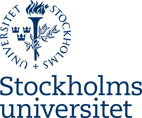Amino acids are essential nutrients and many eukaryotic cells respond to the presence of low levels of extracellular amino acids by enhancing their uptake. We are studying the molecular mechanisms underlying this process in the yeast Saccharomyces cerevisiae and in the human fungal pathogen Candida albicans. The use of yeast has allowed us to rationally investigate the mechanisms of signal transduction in great detail. We have defined the SPS (Ssy1-Ptr3-Ssy5) sensing pathway and have a general understanding of how this pathway transmits amino acid-induced signals from the plasma membrane to the promoters of responsive genes. Our studies have uncovered several novel eukaryotic-specific mechanisms of gene regulation, including receptor-activated proteolysis by the SPS-sensor of latently expressed transcription factors (I), and transcriptional repression by the Asi-complex, an integral component of the inner nuclear membrane (II). The Asi-complex has a larger cell biological role, it safeguards the integrity of the nuclear compartment by targeting soluble and membrane proteins that mislocalize to the nucleus for proteosomal degradation. Additionally, our work has revealed the existence of membrane-localized chaperones that function in the endoplasmic reticulum to prevent inappropriate molecular interactions between hydrophobic segments of polytopic membrane proteins as they insert into the membrane (III). Although these findings are in seemingly disparate areas of research, i.e., signal transduction, membrane protein biogenesis and protein homeostasis, our results are in fact highly interrelated. Our results demonstrate that a broad understanding of cell biology is necessary to understand cellular signaling systems.
Keywords
Saccharomyces cerevisiae, Candida albicans, nutrient sensing, polytopic membrane protein biogenesis, transcription, inner nuclear membrane proteins, ubiquitin-mediated proteolysis
Selected publications
Boban, B., Ljungdahl, P.O. and Foisner, R., Pantazopoulou, M. (2016) Cdc48 and Ubx1 participate in a pathway associated with the inner nuclear membrane that governs Asi1 degradation. J Cell Sci. 2016 Oct 15;129(20):3770-3780.
Boban, B., Ljungdahl, P.O. and Foisner, R. (2015) Atypical ubiquitylation in yeast targets lysine-less Asi2 for proteasomal degradation. J. Biol. Chem. 290,2489-95. doi: 10.1074/ jbc. M114. 600593.
Khmelinskii, A., Blaszczak, E., Pantazopoulou, M., Fischer, B., Omnus, D.J., Le Dez, G., Brossard, A., Gunnarsson, A., Barry, J.D., Meurer, M., Kirrmaier, D., Boone, C., Huber, W., Rabut, G., Ljungdahl, P.O., and Knop, M. (2014) Protein quality control at the inner nuclear membrane. Nature 516,410-413. DOI: 10.1038/nature14096.
Omnus, D.J. and Ljungdahl, P.O. (2014) Latency of transcription factor Stp1 depends on a modular regulatory motif that functions as cytoplasmic retention determinant and nuclear degron. Mol. Biol. Cell 25, 3823-3833.
Boban, M., Pantazopoulou, M., Schick, A., Ljungdahl, P.O. and Foisner, R. (2014) A nuclear ubiquitin-proteasomal pathway targets inner nuclear membrane protein Asi2 for degradation. J. Cell Sci. 127, 3603-3613.
See all publications
(Link to Researcher ID)




